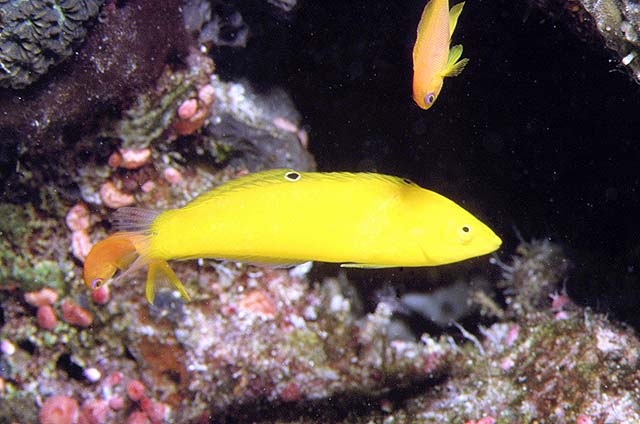| Labridae (Wrasses), subfamily: Corinae |
| 12 cm TL (male/unsexed) |
|
reef-associated; marine; depth range 2 - 70 m |
| Eastern Indian Ocean: Christmas Island. Western Pacific: Solomon Islands, north to southern Japan, south to Rowley Shoals and New South Wales (Australia). Recently reported from Tonga (Ref. 53797). Replaced by Halichoeres leucoxanthus in the Indian Ocean, but with overlapping distributions in Indonesia (Ref. 37816). |
|
Dorsal spines (total): 9-9; Dorsal soft rays (total): 12-12; Anal spines: 3-3; Anal soft rays: 11-12; Vertebrae: 25-25. In life, body bright yellow, head and thorax yellow-orange; a spot behind eye; head with irregular light-green bands. Dorsal fin of males with a large black, white-rimmed spot at the first interspinous membrane (another spot may appear on the soft portion between 2nd and 3rd rays for smaller males); females with a second black, light yellow-rimmed spot; smaller females and juveniles with a third blackish spot on penultimate membrane. Anterior lateral line scales with 2-4 pores; 6-12 suborbital pores. Pelvic fins not reaching anus. |
| Found at the reef edge, in sand and rubble areas (Ref. 9710) usually in small groups (Ref. 90102). |
|
Least Concern (LC); Date assessed: 25 March 2009 Ref. (130435)
|
| harmless |
Source and more info: www.fishbase.org. For personal, classroom, and other internal use only. Not for publication.

